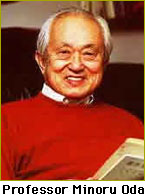At first, black holes were thought to be a figment of the imagination, but gradually they came to be considered a real possibility. We had to wait for the advent of X-ray astronomy, though, to demonstrate their existence through observation. Let's turn back the clock. In 1895, the German physicist Wilhelm Konrad Roentgen discovered X-rays. They were called X-rays because their nature wasn't understood at the time. Now we know that they are a kind of electromagnetic wave. When the wavelength of red light is halved, it becomes purple light, which then becomes invisible ultraviolet light when its wavelength is halved again. If the wavelength of electromagnetic waves continues to be reduced this way until it becomes 1/50th to 1/5000 th of the wavelength of visible light, the waves become X-rays. We can look at electromagnetic waves as a group of particles called photons. The energy contained in one photon is inversely proportional to the length of the electromagnetic wave, so photons of X-rays have 50 to 5000 times more energy than those of invisible light. This means that the generation of X-rays requires high voltage, high temperature, and so on. That's why you will never get X-rays instead of visible light when you switch on the light in your home. X-rays with such high energy have strong penetrating power - strong enough to enable us to see through the human body. Strangely enough, though, they are completely absorbed by the atmosphere of the Earth. This is why it took us so long to realize the existence of high-energy X-rays coming from outer space.
 The star Professor Oda loved best was Cygnus X-1, which emits strong X-rays. After Dr. Giacconi's group launched Uhuru, Professor Oda and his colleagues wasted no time in training their observation on Cygnus X-1. They discovered that the intensity of its X-rays fluctuates by the second. Small mice move around restlessly, while huge elephants walk slowly, so the reasonable conclusion was that this rapidly fluctuating celestial body must be a small one. In addition, Cygnus X-1 emits a type of X-rays that normal celestial bodies don't, so the logical conclusion was that it must be very special. Given these factors, Professor Oda and his group postulated that Cygnus X-1 might be a black hole. It was the the first time that scientists made the connection between an actual celestial body and a black hole. The star Professor Oda loved best was Cygnus X-1, which emits strong X-rays. After Dr. Giacconi's group launched Uhuru, Professor Oda and his colleagues wasted no time in training their observation on Cygnus X-1. They discovered that the intensity of its X-rays fluctuates by the second. Small mice move around restlessly, while huge elephants walk slowly, so the reasonable conclusion was that this rapidly fluctuating celestial body must be a small one. In addition, Cygnus X-1 emits a type of X-rays that normal celestial bodies don't, so the logical conclusion was that it must be very special. Given these factors, Professor Oda and his group postulated that Cygnus X-1 might be a black hole. It was the the first time that scientists made the connection between an actual celestial body and a black hole. |
|||||||||
|
|||||||||

